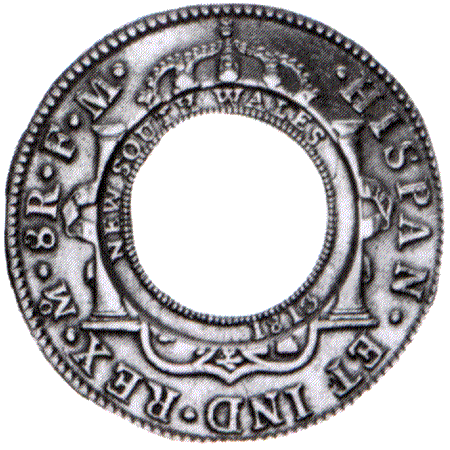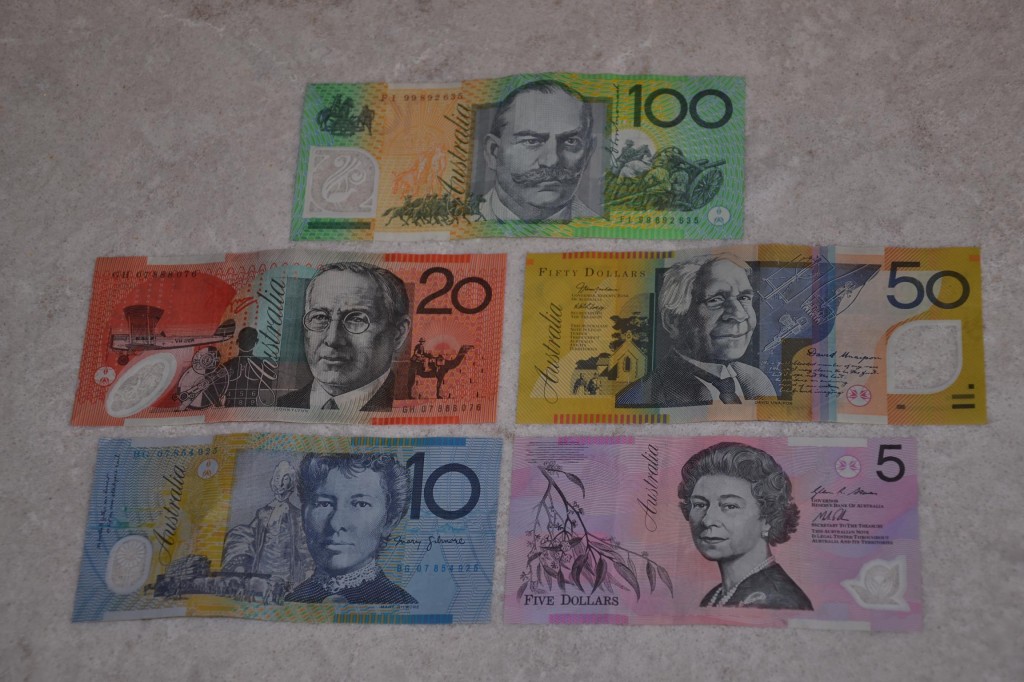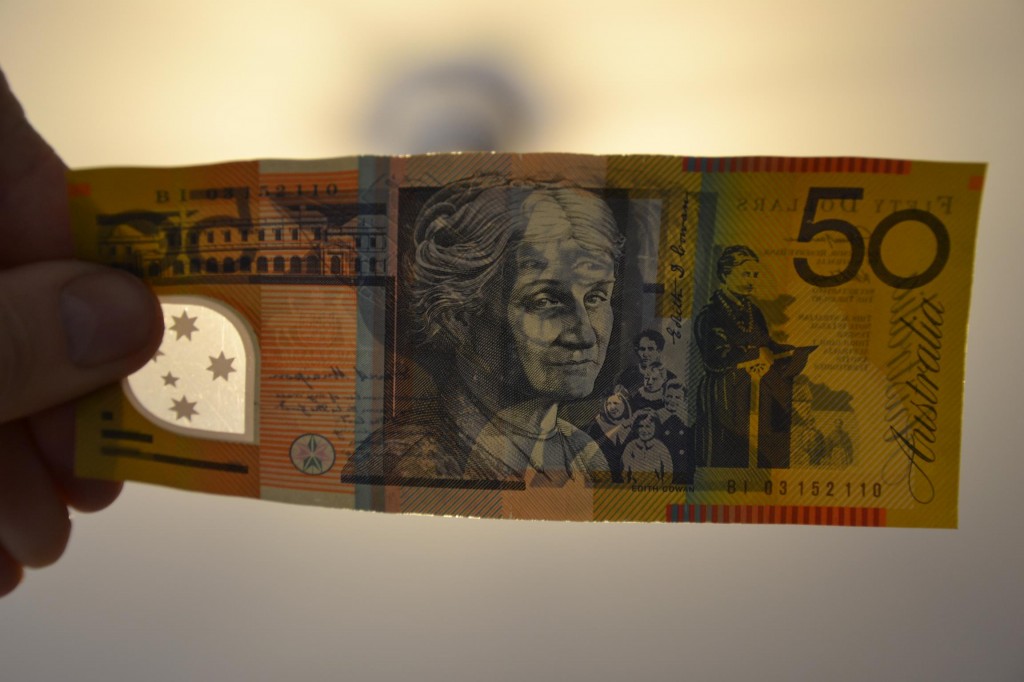Learn English while learning about daily life in Australia, with Rob McCormack
Podcast Number 44 – Australia’s Money
Hi,
Money has an interesting history in Australia. Our money has changed as our country has developed. In this podcast I would like to tell you a little about the history of money in Australia and how we are now using the latest technology to make our money last longer and be more secure.
When Europeans first came to Australia in 1788, money was hardly used at all. There were some foreign coins but they were soon given to ships which visited Sydney in exchange for goods, which of course created a shortage of money. People instead used bartering to buy the things they needed. For example, food was exchanged for clothes, tools and other things which people needed. From 1793 until around 1813, rum was actually used to exchange for things. The government soldiers controlled the stocks of rum and, as a result, they had a lot of power. As you can imagine, this created all sorts of problems in Sydney at the time. In 1813, a new governor, Governor Macquarie, obtained a supply of 40,000 Spanish dollar coins. He modified them by having a hole punched in the middle.
They were then stamped with the words New South Wales and the date 1813. These ‘Holey Dollars’, as they were called, were used until 1829. Today, only around 350 of these coins still exist, and each one is worth up to $400,000 to buy. They were actually the first real Australian money.
In 1824, 100,000 English pounds worth of English money arrived in Sydney by ship. This became the standard money used in Australia from 1829. English money continued to be used in Australia until the first Australian currency was made in 1910.
In English money, there were 12 pence which made 1 shilling and 20 shillings which made 1 English pound.
In 1910, 9 years after Australia became a nation, the Commonwealth Bank was created by the Australian government. The bank was given the job of managing the money system in Australia. From 1913, Australian notes and coins were issued by the Commonwealth Bank. For the first time, we had our own Australian money. It worked the same way as English money. There were 12 pence which made 1 shilling and 20 shillings which made 1 Australian Pound.
This is the money which I remember from my childhood. As a child I can remember that 1 shilling was a lot of money. Each shilling was also called a ‘bob’ by the people. To have a ‘bob’ in your pocket was fantastic. You could buy a very big bag of lollies with a ‘bob’.
In 1960, a new government bank was created to manage Australia’s monetary system. It was called the Reserve Bank of Australia. Plans were made to change from the English system to a new decimal system of money. In a decimal system, everything is multiples of 10. In this system, there are 100 cents which make 1 dollar.
On the 14th of February 1966, Australia changed to the new decimal system of money. New coins and new notes were produced by the Reserve Bank. I can remember this change very well. I was around 14 at the time and there was a very long and intensive information program to educate all Australians about the change. There was, for example, a lot of radio, newspaper and television advertising. I can still remember the advertising jingle after all this time (50 years later). That shows how successful the information program was.
https://www.youtube.com/watch?v=7oTDRjyti1s
I can also remember how very excited we were when we first got our hands on the new money. Our new coins consisted of 1c, 2c, 5c, 10c, 20c and 50c coins. Our new bank notes consisted of $1, $2, $5, $10, $20, $50 and $100 notes.
In 1984 the $1 note was phased out and replaced with a gold $1 coin. In 1988, the $2 note was phased out and replaced with a gold $2 coin. We even lost our 1c and 2c coins in 1992, when they were phased out. If you are paying in cash, the price of anything is always rounded up or rounded down to the nearest 5c. For example, if something costs $2.92, then you pay $2.90. If it costs $2.98, then you pay $3.00.
The recent history of our bank notes is also interesting. When the new decimal notes were introduced in 1966, it only took a few months before counterfeit $10 notes were being produced by counterfeiters. A special police group was formed in the Australian Federal Police to focus on counterfeiting and the Reserve Bank of Australia (the RBA) offered rewards for information about counterfeiters. The RBA also started working with Australia’s government science and research organization, the CSIRO, to develop new ways, using technology, to improve the security of our money in order to prevent counterfeiting.
In the 1970s, the RBA experimented with making a plastic or polymer bank note, as this would allow much better security features to be included, including special types of images. After trials in the mid-1980s, the RBA finally released Australia’s, and the world’s, first polymer banknote in January 1988. It was the $10 note. On one side of the note, it had pictures celebrating our bicentenary of European settlement, which was being celebrated in Australia that year. On the other side of the note, it had pictures celebrating the previous 40,000 to 60,000 years of settlement and life by Australia’s first people, the Aboriginal people. This first note was a great success and between 1992 and 1996, all the Australian banknotes were issued as polymer notes.
The printing of these notes uses special technology and the notes are covered with a thin film to keep them clean and to make them last a long time. They do feel a little strange and it takes a while to get used to them. But they are certainly strong. It’s hard to tear them, and I can say they are water resistant. I have, on a couple of occasions, put my wallet through the washing machine by mistake, with bank notes inside. After being washed, the polymer bank notes are still okay to use, once they dry off. The security features are quite technical and include 8 different aspects. For example, the Australian Coat of Arms (Australia’s official symbol) can be seen under the printing when the note is held up to the light.
They also have a clear area or window, through which you can see, which is not possible with paper money. They are not affected by chemicals and, since they last longer, it costs less overall to produce our money. They can also be recycled when they have reached the end of their life.
29 other countries have now started using these types of bank notes. Australia produces the polymer for more than half of these countries. We are leading the world in this type of technology. Next time you see some Australian bank notes, have a closer look.
If you have a question or a comment to make, please leave it in the comments box at the bottom of this page. Or, you can send me an email at rob@slowenglish.info. I would love to hear from you. Tell me where you live, a little bit about yourself and what you think of my Slow English podcast. I will write back to you, in English of course. If you would like to take a short quiz to see if you have understood this podcast, you will also find it on my website. Goodbye until next time.
Rob
Podcast 44 Quiz - Did you understand the podcast?
You can take the quiz as many times as you like.
Vocabulary
Aboriginal = the first people of Australia, who were already living in Australia when Europeans arrived
advertising = messages that tell you about something, to make you buy it or to understand it
bicentenary = 200 years since something happened
by mistake = when you did not plan to do this
cash = coins or money (not credit card)
celebrating = to be happy about something and to have a party
chemicals = special types of materials, used to make things, often poisonous
consisted = the parts of something
controlled = when someone can decide what happens
counterfeit = money that is not real, it is fake
counterfeiters = people who make counterfeit or fake money. They are criminals
created = made
currency = money
developed = improved, become better
educate = to teach
exist = when something is there to be seen
fantastic = very, very good
features = the characteristics
film = a thin covering
focus = when you pay attention to something
foreign = from another country
hardly = not often
history = what has happened in the past
images = pictures
imagine = when you think of something in your mind
in exchange = when you give something and get something else in return
intensive = when something is made strong or very detailed
introduced = to bring in, to put in place
issued = to give out
jingle = a special song that is short and can be remembered – used with advertising
lollies = sweets, candy
managing = controlling something, looking after something
modified = when something is changed
monetary = about money
nation = a country with its own government
phased out = when something is removed, usually slowly
polymer = a special type of plastic
power = when you are in charge and can tell others what to do
prevent = to stop
punched = to make a hole in something
recycled = to use again, usually in a different form
replaced = when you take something out and put something else in to take its place
rum = a very strong alcoholic drink
secure = safe
security = safety
shortage = when there is not enough
soldiers = men who are in the army, to fight and protect others
standard = something common, used by everybody
supply = an amount of something
technology = new things which science to solve problems
water resistant = when something is not damaged by water
worth = the value that somebody will pay for something




May 27, 2024 at 2:34 pm
Hi Rob, I really enjoyed reading your post, especially the part about the pronunciation, I decide for reading your posts every day. thank you so much.
Best Regards,
May 27, 2024 at 3:20 pm
Hi Lisa,
Many thanks for your feedback. I am impressed that you will read my podcast every day. You are on the road to success!
Best regards,
Rob.
May 27, 2024 at 2:23 pm
Hi Rob, I’m happy for your class this morning. You inspirit encourage me to learn English well. you are my example of study second language. I learnt both Knowlege and English. Thank you very much>
May 27, 2024 at 3:18 pm
Hi Frank. Many thanks for your comment. Your enthusiasm inspires me as well. You will soon be speaking English like an Aussie.
Best regards,
Rob
May 27, 2024 at 2:23 pm
Hi Rob McCormack,
Reading your Podcast Number 44 – Australia’s Money, let me know Australia Money’s history, your writing is easy to understand. I hope to learn more about Australia by reading your podcast.
Thank you so much.
May 27, 2024 at 3:15 pm
Hi Quiyi Li,
Many thanks for your comment. I really appreciate your feedback. Enjoy your day.
Rob.
May 27, 2024 at 2:05 pm
Your podcast is very great. let me know the history of money in Australia. I learn both knowledge and English. Thank you, Rob.
May 27, 2024 at 2:54 pm
Hi Frank. Many thanks for your feedback. I enjoyed meeting you this morning. Good luck with your English studies. You are doing well!
Best regards,
Rob
October 2, 2021 at 9:49 pm
Hi Rob,
A thing is valued if it is rare. So if some day a full box of the Holey Dollars are found, I’m afraid their total value will be less than today’s one, $400,000X350. Thinking about it this way, it is not necessarily a bad thing that for the moment a real treasure, as an antiquities, hidden away in soil all around Sydney. It’s just my opinion.
Thank you so much for the great sharing.
Dep
October 3, 2021 at 12:58 pm
Hi Dep. Many thanks for your comment. Yes, if a large number of holey dollars were suddenly found, then their value would drop. But I suspect that very few will be found in the future, and not in large numbers, leading to their high value being maintained. Who knows? Perhaps some Sydneysiders will strike it lucky.
Have a great day.
Rob
November 23, 2019 at 8:20 am
Hi=)
Thanks for such an interesting podcast. It`s easier to improve English learning something new.
November 23, 2019 at 6:29 pm
Hi Oxana,
Thanks for your positive feedback. Have fun learning English.
All the best,
Rob
June 17, 2016 at 3:02 am
Hi, I have encountered all my 100aud notes with chop marks on it. Is it useable? Like I have seen on the US bill. Because the 100aud notes is made of polymer. So I am worried. I tried to google about AUD notes with those chop marks but does not seem to have any information.
June 17, 2016 at 7:15 pm
Hi Jen,
I suggest you contact your local bank who can advise you.
Cheers,
Rob
July 5, 2014 at 7:28 pm
Hi Rob, Another fine report. I particularly liked learning about the holy dollar which a lots of aussies may not know about. Thanks for sharing. Cheers, Raymond
July 5, 2014 at 7:47 pm
Hi Ray. Thanks for your kind comment. Yes, interesting information about the Holey Dollars. There must be many thousands hidden away in soil or building foundations all around Sydney. A real hidden treasure waiting to be found.
Cheers,
Rob